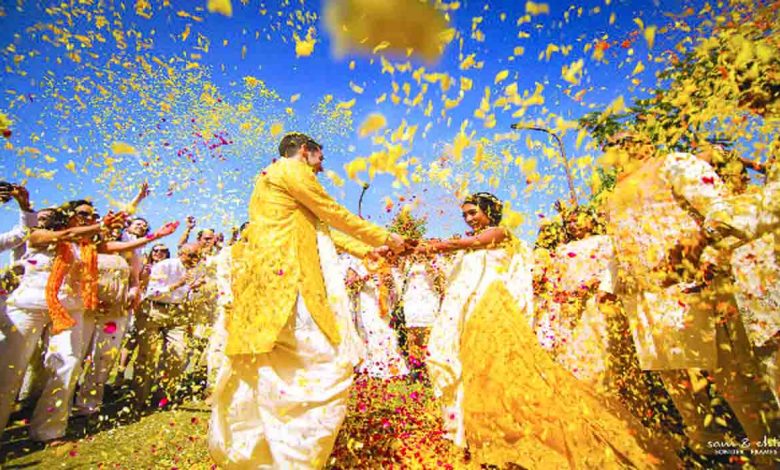United colours of Holi

From pyre ashes, gulal and flowers to lathmar, here are some ways people celebrate the festival. By Team Viva
They say, cultural and religious diversity is the very essence of India. And hence, the term: Unity in diversity. It also somewhere reflects in the way various regions of the country celebrate Holi. Cities, villages and tribal communities across the country engage in the festivities each with its own peculiarity. On the occasion, let’s check out some different ways people play the festival.
Shimga or Rangpanchami
Usually, at this time bright colours fill the air. Holi is celebrated with much pomp and splendour in Maharashtra. Lasting for five days to a week, this festival of colours is popularly known as Shimga or Rangpanchami. The tribals such as Andh, Arakh, Gond, Kathodi, Bhaniya, Dhodia constitute 8.61 per cent of the population. Even though they are a marginal community, they are deeply-rooted in their heritage and culture and have retained many of their native customs. The traditions and customs of every tribe are different from each other but the significance of Holi is paramount for all the tribes. The festival lasts from the full moon to the new moon in some areas and until the next full moon in others. The festival has many unique facets. For some groups, it is associated with the worship of nature and for others, with fertility or agriculture or prosperity or forging new relationships.
Lathmar Holi
It takes place days before the actual Holi in the neighbouring towns of Barsana and Nandgaon near Mathura in Uttar Pradesh. But what is this tradition where women beat men with sticks during this peculiar celebration? Well, according to a legend, it’s because Lord Krishna used to visit his beloved Radha’s town, Barsana. Krishna teased Radha and her friends, who were offended by his advances and drove him out of Barsana. And that is why men of Nandgaon visit Barsana every year and are greeted by women hurling sticks (aka lathi) at them. They try to protect themselves but those who fail are captured by these women who then dress them in female apparel and make them dance in public. The festivities take place at the Radha Rani temple in Barsana, which is said to be the only temple in the country that is dedicated to Radha.
Phoolon wali Holi
On Ekadashi, prior to the festival, the Banke Bihari temple at Vrindavan celebrates the festival where only flowers are used and hence, the name Phoolon Wali Holi. The ambience, filled with fragrance and flowers, takes you to a different world altogether.
Hola Mohalla
The Guru Granth Sahib contains passages prescribing the celebration of Holi by serving god. The colours of the festival are manifest in the lord’s love. As Holi starts with Holika Dahan on the full moon night of Phagan or Phalgan, it is referred to as the festival of Phalgun even though the actual day of Holi falls on the first day of the lunar month of Chett. Shri Guru Gobind Singh Ji added a martial element to this celebration by creating Hola Mohalla which falls a day after Holi. Paying tribute to the mettle and valour of the Sikh men, it is celebrated as an event that exhibits martial arts, stunts, and mock fights followed by the usual tradition of playing with colours. According to Guru Gobind Singh’s court poet Bhai Nand Lal, colours were thrown by the participants after completion of the mock battles. Rosewater, amber, musk and saffron-coloured water was used.
Dol Jatra or basant utsav
Holi is celebrated as Basant Utsav or Dol Jatra in West Bengal. It welcomes the blooming season with great enthusiasm and happiness. Women here dress mainly in yellow, which signifies abundance. There are recitals of Rabindranath Tagore’s poetry as well as traditional song and dance programmes. The day after Holi is celebrated as Dol Jatra. On this day, a grand procession of Lord Krishna is taken through the streets of Bengal accompanied by singing and dancing revellers.
Pyre Ashes
Did you know that people also celebrate the festival with pyre ashes? Well, devotees of Lord Shiva at Manikarnika Ghat in Varanasi revel in the festivities by picking ashes from cremation grounds. Although it may sound strange but this tradition, known as chita-bhasma Holi, has been observed for many centuries. It is celebrated in the hope of attaining moksh (salvation).
One festival and so many diverse ways to celebrate it… However, what is common is the spirit of joy which remains intact everywhere.
Monday, 29 March 2021 | Team Viva





